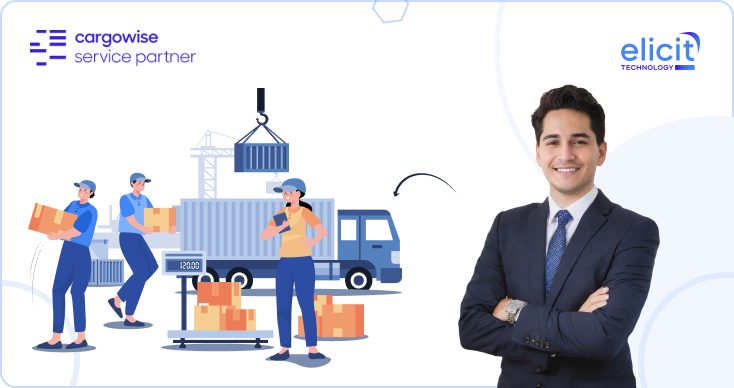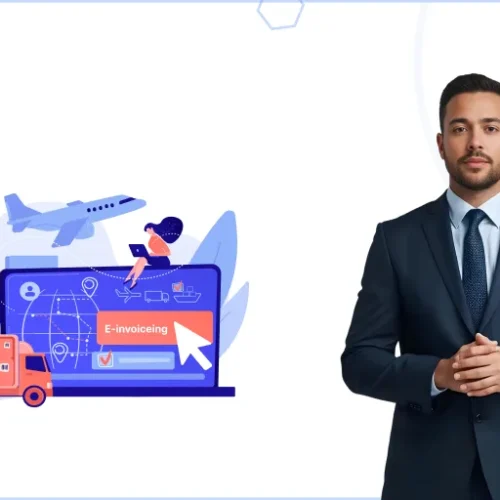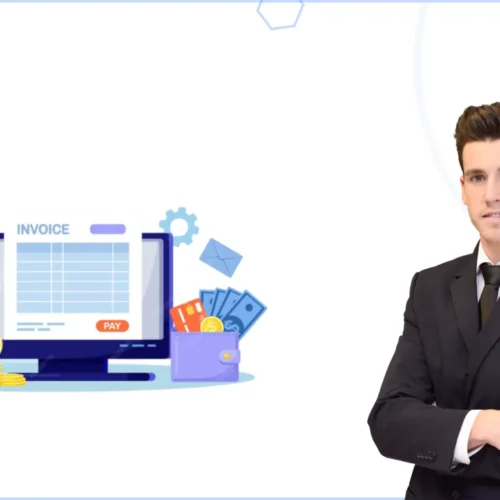Your teams are busy. Your shipments are global. Your margins are tight.
And you’re using CargoWise, great!
But here’s the hard truth: if your workflows aren’t optimized, you’re not getting the full value of the system. CargoWise has the power to automate, orchestrate, and accelerate nearly every step in your logistics operations, but only if it’s set up right.
CargoWise workflow optimization is about more than just speeding things up. It’s about designing a system that does the heavy lifting for you, automating repetitive tasks, minimizing human error, and aligning your digital process with your real-world logistics operation. Whether you’re just starting with CargoWise or you’ve been using it for years, optimizing workflows can transform your operations and create lasting value.
Why are Many Freight Forwarders Struggling with Workflows?
For most logistics providers, the initial CargoWise setup focuses on getting the system live: inputting clients, setting up modules, and training teams on how to create jobs and invoices. But workflow design, the part of CargoWise that controls how tasks move through the system, is often skipped, delayed, or left at default settings.
As a result, day-to-day operations remain manually driven. Staff enter the same information across multiple screens, emails are sent to confirm every milestone, and billing is delayed until someone remembers to notify finance. Departments operate in silos. Tasks are missed or duplicated. And leadership lacks real-time visibility into where shipments or delays sit.
These issues don’t just slow down your team. They lead to lost revenue, customer dissatisfaction, and burnout among staff who feel like they’re constantly “chasing the system” instead of being supported by it.
What Can You Gain from Optimizing Workflows in CargoWise?
When your CargoWise workflows are optimized, your system becomes more than a database, it becomes an engine. Each task flows automatically to the right team, at the right time, based on rules you set. Operations no longer need to check manually if a shipment was delivered. Finance doesn’t need to wait for job status updates to create an invoice. Customers receive real-time updates when milestones are met, without your team having to lift a finger.
This kind of automation creates several advantages. First, it reduces manual workload. Every repetitive process, job creation, document generation, email alerts, and invoicing can be triggered by CargoWise when a milestone is met.
Second, it increases visibility and accountability. With optimized workflows, every task has a defined owner, a deadline, and an escalation path if it isn’t completed on time.
Finally, it helps teams work together more efficiently. Sales, operations, finance, and compliance can all see the same live data and act faster when things go wrong.
How Does CargoWise Workflow Optimization Work in Practice?
Optimizing workflows inside CargoWise is a structured process. It starts by reviewing how your business actually runs. For example, when a shipment is booked, what happens next? Who handles the customs paperwork? Who alerts the consignee? When is the invoice sent? These real-world processes need to be mirrored inside CargoWise using automated triggers, tasks, and alerts.
A basic workflow might look like this: once a job is created, the system automatically assigns a task to the operations team to book space with the carrier. Once that task is completed, the next task is triggered to prepare documentation. After documents are approved, another task triggers the shipment status update, and so on. At each stage, the system knows who’s responsible, what needs to be done, and what happens next.
Advanced workflows go even further. For example, you can build condition-based rules that send automatic customer notifications when a shipment clears customs. Or you can set up automated invoicing triggers that bill clients as soon as proof of delivery is uploaded. You can also create escalation workflows that alert supervisors when a critical task is delayed beyond a certain timeframe.
All of this can be done within CargoWise, it just requires a clear understanding of your operations, the right configuration strategy, and structured user training.
Why is Workflow Optimization a Mindset Shift?
For many freight forwarders, workflow optimization is not just a technical upgrade, it’s a mindset shift. Instead of relying on people to remember tasks, update spreadsheets, or manually trigger events, you’re shifting to a process-driven culture where the system takes the lead. Your teams go from managing steps to managing exceptions.
This change reduces risk and increases confidence. The new company onboarding is faster because the system guides their steps. Remote teams can collaborate more easily because task handovers are automated. Managers can spend less time micromanaging and more time improving customer experience or identifying opportunities.
The reality is that logistics is too fast-moving to rely on memory, emails, and sticky notes. Workflow optimization ensures that every job, no matter how complex, follows a structured, automated path and that nothing slips through the cracks.
When Should You Consider Professional Help?
While some companies can build simple workflows internally, most benefit from working with certified CargoWise consultants, especially when operations span multiple locations, modes of transport, or client requirements. We often see companies try to build workflows but struggle with incomplete logic, broken links between tasks, or poor system visibility.
Our approach is hands-on and tailored. We start by auditing your current workflow structure (if one exists), mapping your actual business processes, and identifying where automation can replace manual effort. From there, we build optimized workflows that match your operations, configure triggers and escalations, test everything in a controlled environment, and then train your team to manage the new system confidently.
We’ve helped freight forwarders reduce job processing times by 45%, cut billing delays in half, and eliminate dozens of hours each week spent on repetitive manual steps.
What Results Can You Expect from CargoWise Workflow Optimization?
The impact of optimized workflows is felt across the entire business. Operations teams get more done in less time. Finance teams invoice faster, with fewer disputes. Customers get real-time updates without asking. And leadership gains access to accurate, live reports that show where revenue is coming from or where problems are happening.
In the long run, workflow optimization helps you scale. Whether you’re adding new companies, increasing shipment volumes, or offering new services, your system can keep up because it’s been built for growth.
Conclusion
CargoWise, when utilized properly, has lots of benefits for its users. Workflow optimization turns it from a data entry platform into a performance engine. If you’re tired of obstacles, miscommunication, and manual follow-ups, it’s time to let the system work for you.
As certified CargoWise consultants, we specialize in helping freight forwarders and logistics providers design workflows that reflect their real operations, making jobs smoother, faster, and more profitable.
Ready to Optimize Your CargoWise Workflows? Schedule a demo today. We’ll review your current setup, identify gaps, and help you build a smarter, more automated operation inside CargoWise.






